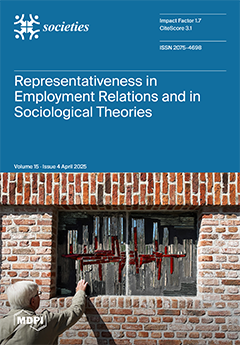Intimate partner violence (IPV) continues to be a serious public health issue, particularly in Ghana. It is crucial to create evidence-based, preventative measures to stop IVP. This study empirically investigated the factors related to married women’s perceptions of male IPV against women. The
[...] Read more.
Intimate partner violence (IPV) continues to be a serious public health issue, particularly in Ghana. It is crucial to create evidence-based, preventative measures to stop IVP. This study empirically investigated the factors related to married women’s perceptions of male IPV against women. The United Nations Sustainable Development Goals (SDGs) (Goal 5.2) advocate for the elimination of male violence against women by governments, hence this study contributes to monitoring the progress being made. This study employed cross-sectional secondary data from Ghana Multiple Indicator Cluster Surveys (MICS) conducted in 2018 with a sample of 14,237 women aged 15–49. Data were analyzed using descriptive statistics and bivariate and multivariate logistic regressions, and the results were presented as odds ratios (ORs) with a confidence interval (CI) of 95%. Women’s justification of male IPV against women was correlated with socio-demographic factors such as education level, marital status, age of the woman, area of residence (rural or urban), ethnic background, and economic disadvantage (wealth status). Higher educated women (OR 0.248 [95% CI 0.185–0.332,
p < 0.001]) were less likely to justify male IPV against women than women with no/less formal education. Women who were in the richest quintile (OR 0.766 [95% CI 0.634–0.926,
p = 0.006]) were less likely than those in the poorest/lowest quintile to rationalize/justify intimate partner violence. In terms of ethnicity of the household head, the Ga/Dangme (OR 0.86 [95% CI 0.714–1.036,
p = 0.112]) had lower odds of justifying male IPV against women compared to the Akan. The government, through the Ministry of Gender and Child Protection and women’s advocacy groups, should devise strategies, programs, and policies to empower women through formal education and economically through job training and employment support for women and victims to help them achieve financial independence and reduce negative attitudes toward women and the prevalence of male IPV against women.
Full article





